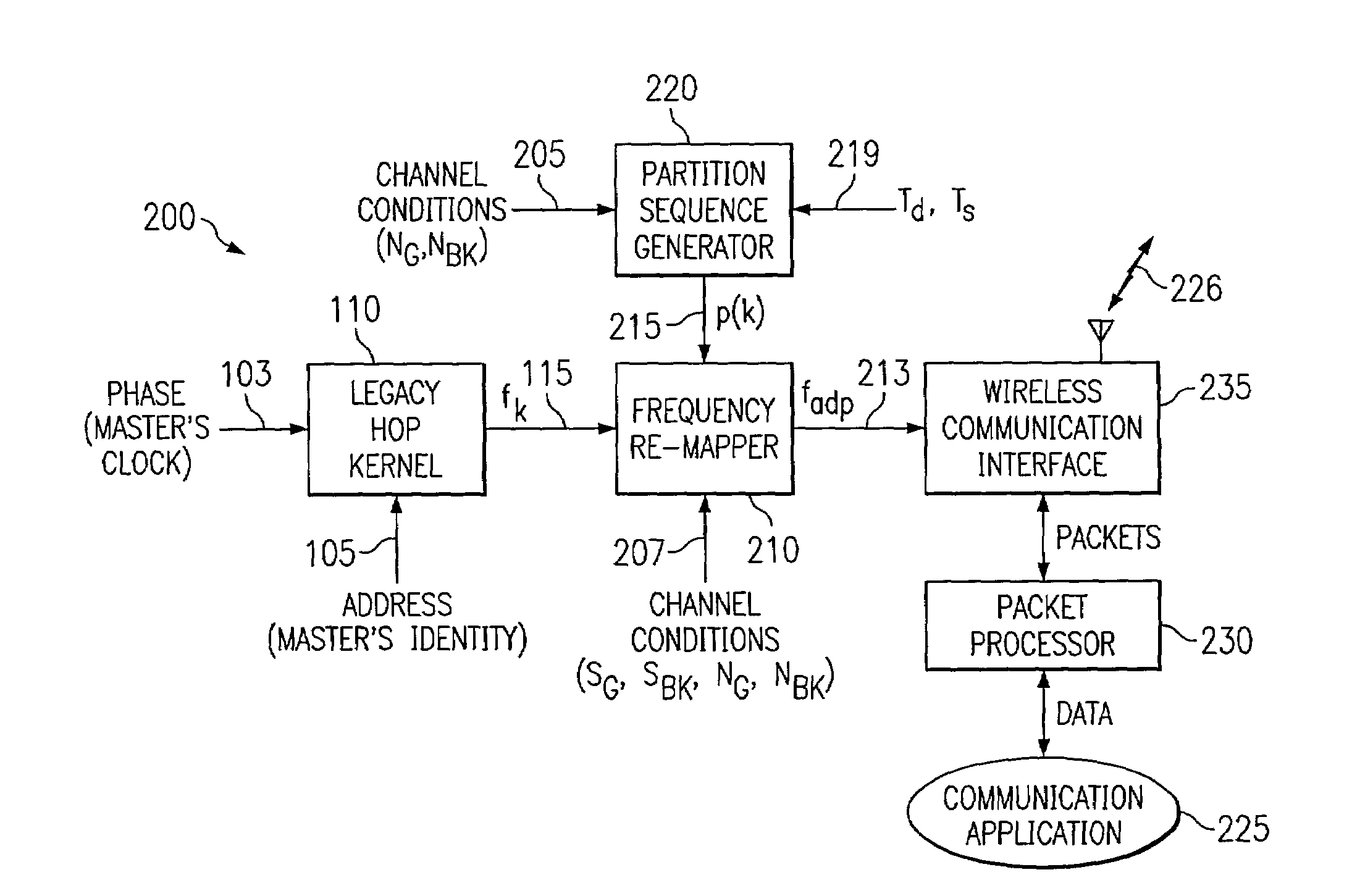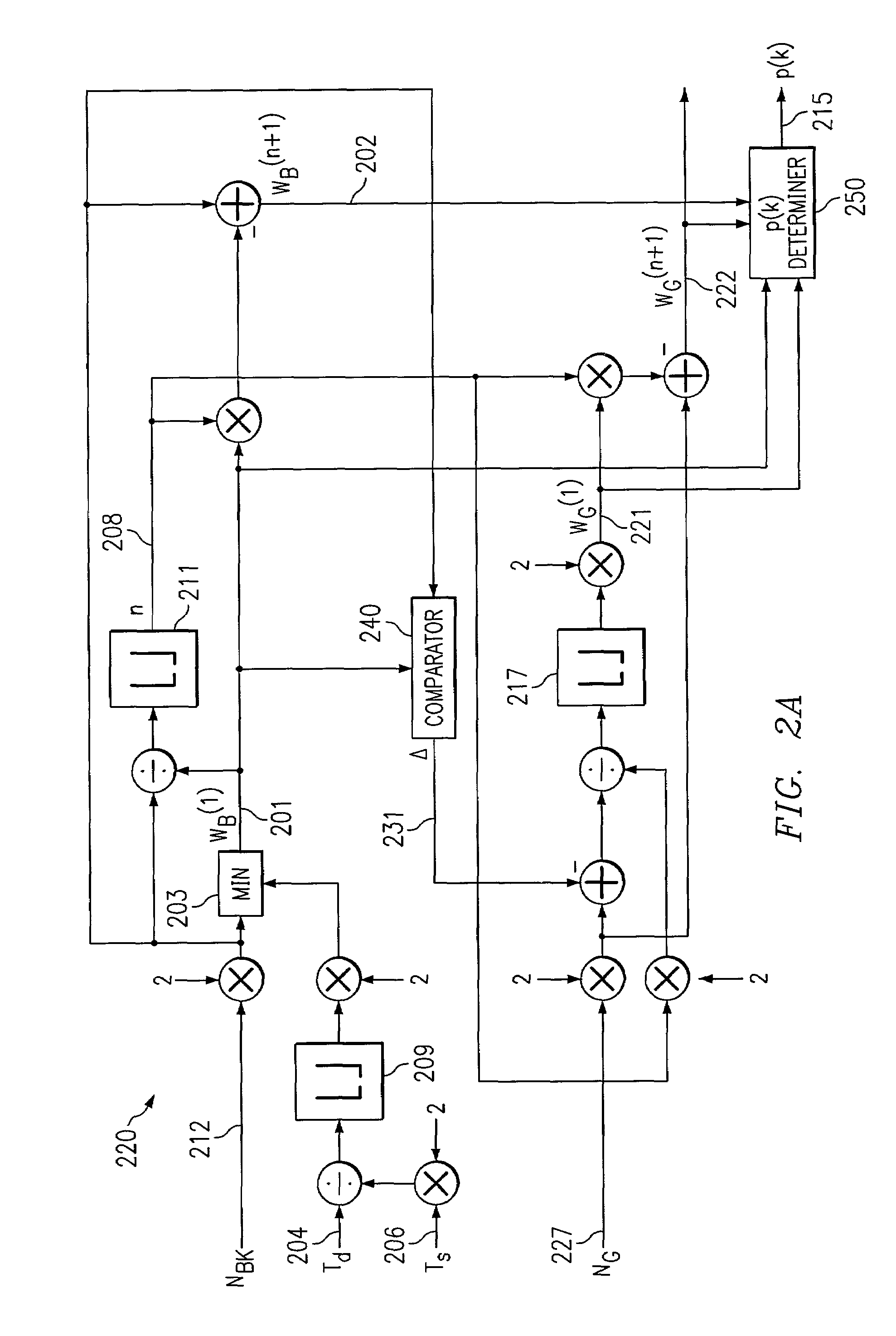Structured adaptive frequency hopping
a frequency hopping and adaptive technology, applied in the field of wireless communication, can solve the problems of degrading packet transmission, interference is the dominant source of degradation of bluetooth systems, and limiting throughput and packet transfer rates
- Summary
- Abstract
- Description
- Claims
- Application Information
AI Technical Summary
Benefits of technology
Problems solved by technology
Method used
Image
Examples
Embodiment Construction
[0033]While the making and using of various embodiments of the present invention are discussed herein in terms of specific variables, channel parameters and wireless networks, it should be appreciated that the present invention provides many inventive concepts that can be embodied in a wide variety of contexts. The specific embodiments discussed herein are merely illustrative of specific ways to make and use the invention, and are not meant to limit the scope of the invention.
[0034]The present invention provides a low computational complexity adaptive frequency hopping mechanism that mitigates the interference effects of bad channels. The present invention can provide a structured adapted hopping sequences that reduces the transitions between good and bad channels and / or assign good channels to slots where data is to be transmitted and bad channels to idle slots. An adaptive frequency hopping mechanism according to the invention generates a partition sequence that is periodic, and c...
PUM
 Login to View More
Login to View More Abstract
Description
Claims
Application Information
 Login to View More
Login to View More - R&D
- Intellectual Property
- Life Sciences
- Materials
- Tech Scout
- Unparalleled Data Quality
- Higher Quality Content
- 60% Fewer Hallucinations
Browse by: Latest US Patents, China's latest patents, Technical Efficacy Thesaurus, Application Domain, Technology Topic, Popular Technical Reports.
© 2025 PatSnap. All rights reserved.Legal|Privacy policy|Modern Slavery Act Transparency Statement|Sitemap|About US| Contact US: help@patsnap.com



